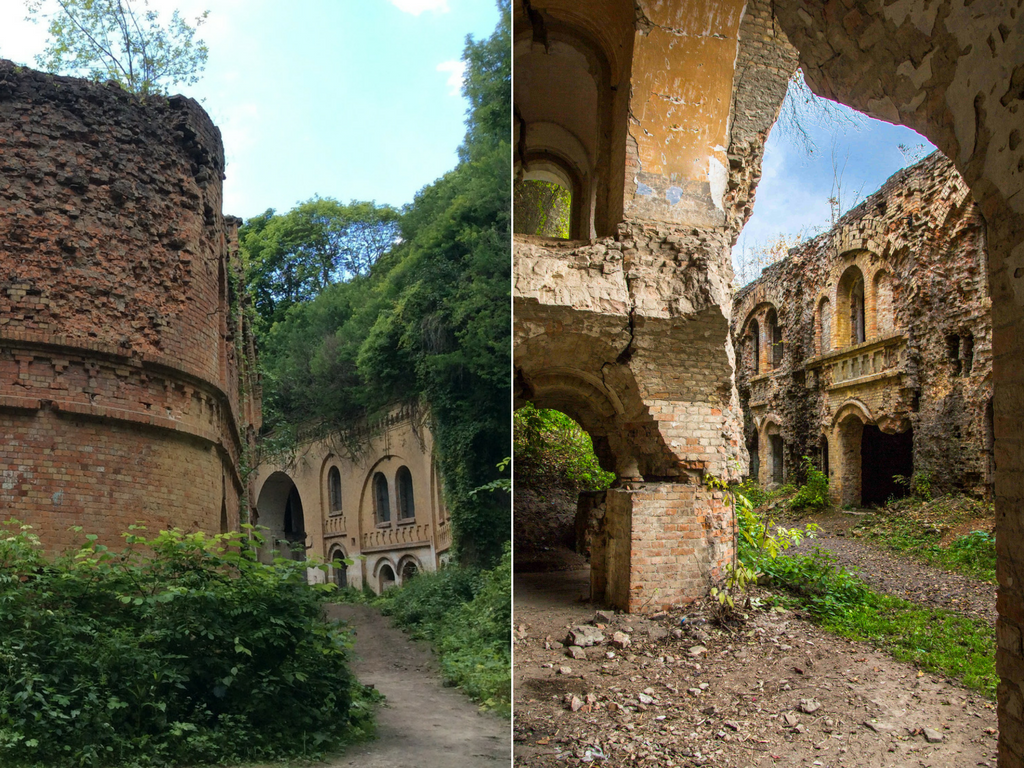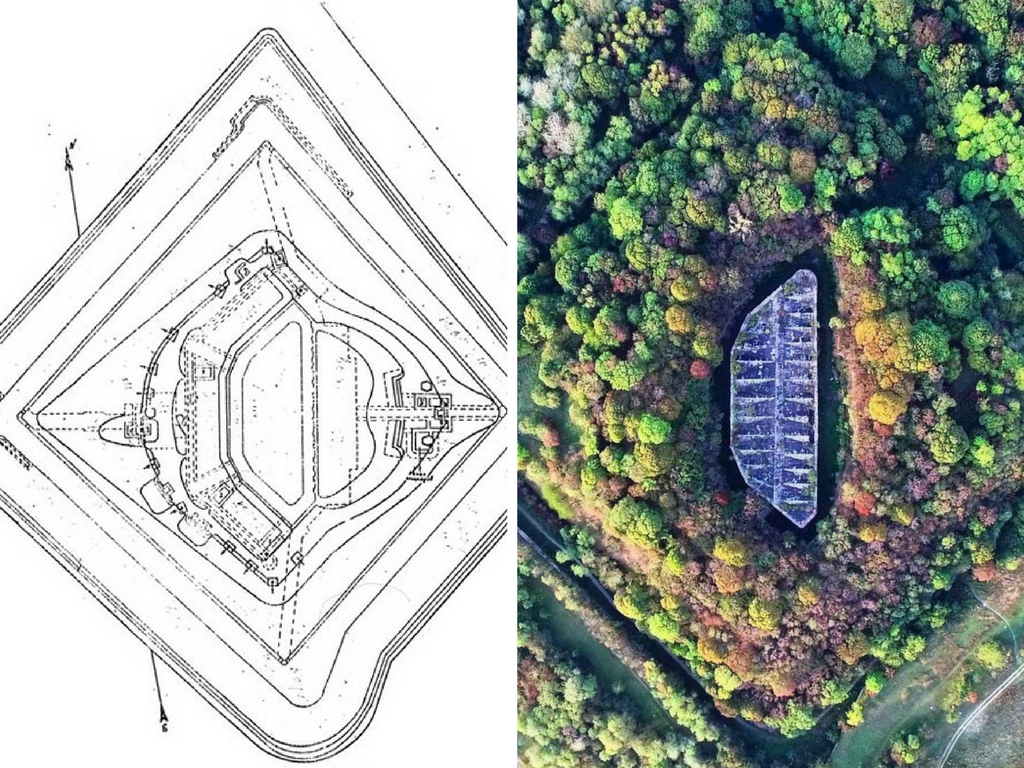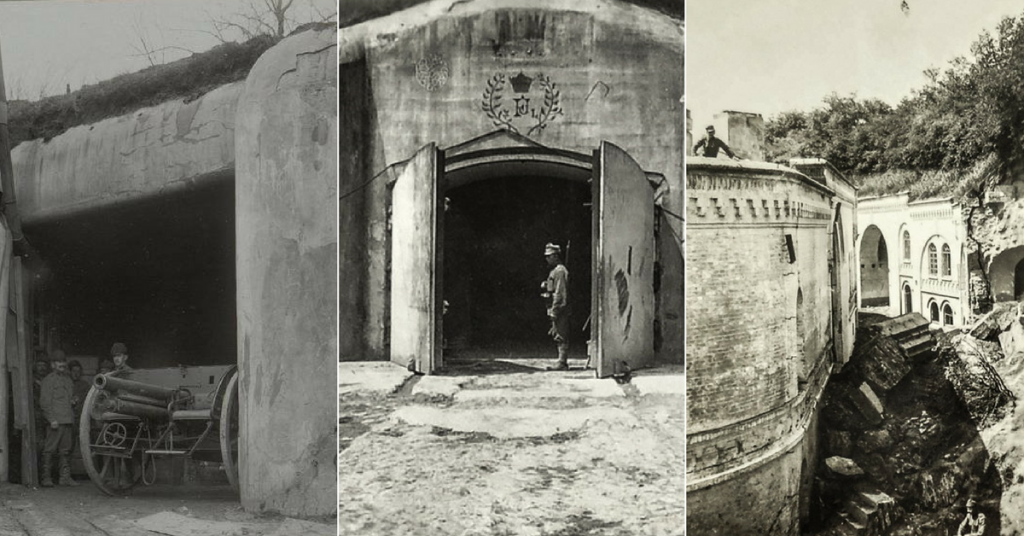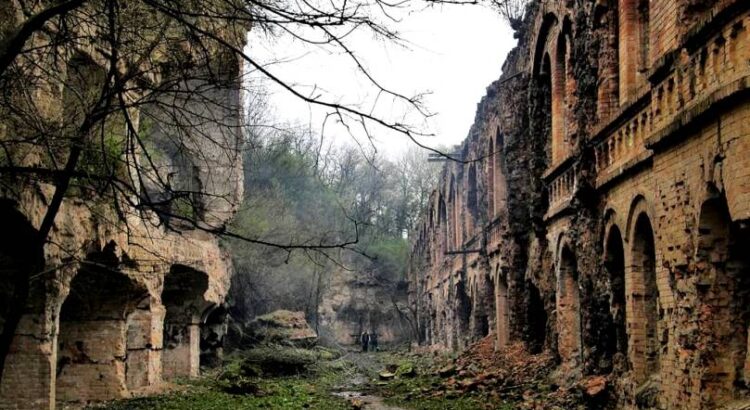The Tarakaniv Fort, located in the Dubno district of the Rivne region, Ukraine, is a fascinating historical and architectural monument. Built in the late 19th century as part of the Russian Empire’s defense system, the fort witnessed significant events throughout its history. This article delves into the story of the Tarakaniv Fort, exploring its construction, military significance, and current state.
From the mouths of the old residents, you can hear the legend that during the Second World War, the Germans developed secret weapons in the fort. It is said that there have been cases of disappearance of people in the fortress. Here, on one of the walls, you can see a list of the names of people who never returned from the fort in the second half. 20th century. There are rumors that ghosts of Austrian soldiers who found their last refuge on the outskirts of the fort roam the fort at night.

Construction and Design:
The construction of the Tarakaniv Fort began in 1873 under the supervision of the renowned military engineer Eduard Totleben. The fort was designed to be a powerful defensive structure, equipped with six-meter-high walls, an extensive system of underground tunnels, and modern infrastructure. It also featured ventilation, an electrical network, a water supply system, sewage system, and even a telephone connection. The fort’s facilities included medical rooms, a dining hall, a laundry room, and a bakery to meet the needs of the garrison. A garrison church was also built within the complex. The fort was armed with 40 cannons of various calibers and 10 machine guns.

Military History:
Despite its impressive fortifications, the Tarakaniv Fort never fulfilled its intended purpose. In 1905, a soldier uprising led to the disbandment of the garrison, and the fort was converted into a military prison. The fort experienced its first baptism of fire during World War I when it was captured and heavily damaged by the Austrian army. During the Polish-Soviet War in 1920, the fort saw further action as Polish forces attempted to defend it against the Budyonny army. After World War II, the fort was used by the NKVD, who left behind concreted tunnels, the secrets of which remain hidden to this day.

Post-War Decline and Current State:
In the following decades, the fort was used for various purposes, including as a storage facility for canned goods and car parts. However, these attempts were unsuccessful due to high humidity and poor ventilation. For many years, the fort served as a shooting range for the military and gradually fell into disrepair, becoming a picturesque ruin. Illegal excavations by “black archaeologists” have also contributed to its current state.
Today, the Tarakaniv Fort remains under the jurisdiction of the Ministry of Defense of Ukraine, sharing the fate of many abandoned architectural monuments.
Exploring the Fort:
The outlines of the Tarakaniv Fort resemble a diamond. Its defense system included a deep moat and earthen ramparts, reinforced by a retaining wall with decorative masonry. Two bridges and underground tunnels connected the citadel to the outside world. Around the perimeter of the fort stood 105 two-story casemates with ornate friezes and pilasters, which were used to house the lower-ranking members of the garrison and for various military and хозяйственные purposes. During military operations, the casemates could accommodate up to 800 people.
The central building of the complex was the officers’ quarters, which was faced with red brick, like the casemates. It housed the headquarters of the fort commandant, as well as living and хозяйственные quarters for an artillery company. The officers’ quarters and casemates have been partially preserved, and their non-military elegance is striking.
The fort’s extensive network of underground passages, equipped with loopholes, is hidden from view. The underground corridors also ran under the earthen rampart.
Legends and Dangers:
The Tarakaniv Fort is shrouded in mystery and legend. Locals tell stories of a secret weapon being developed by the Germans in the fort during World War II. There have also been reports of people disappearing within its walls, and a list of names can be seen on one of the walls – people who never returned from the fort in the second half of the 20th century.
It is rumored that the ghosts of Austrian soldiers who found their last resting place around the fort wander its halls at night. Visitors should be especially careful when exploring the casemates and underground passages, as there are hidden pitfalls that pose a danger to unwary tourists. Therefore, it is recommended to have a flashlight and to visit the fort only with experienced guides.
Conclusion:
Unlike the well-maintained and orderly Dubno Castle, the Tarakaniv Fort is incredibly attractive due to its spectacular wild architecture and mystical legends. It is a place where history and mystery intertwine, offering a unique and unforgettable experience for those brave enough to explore its secrets.




